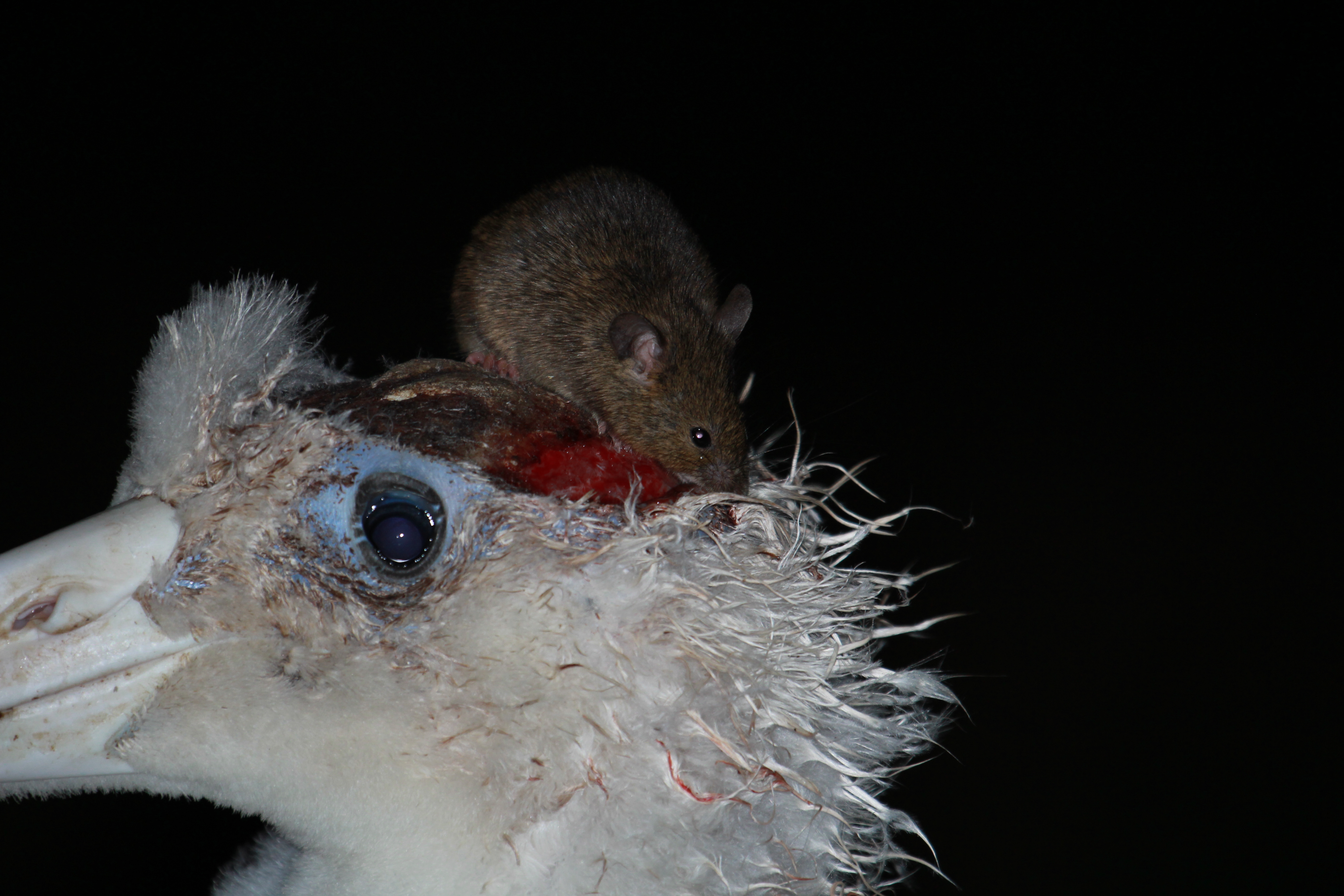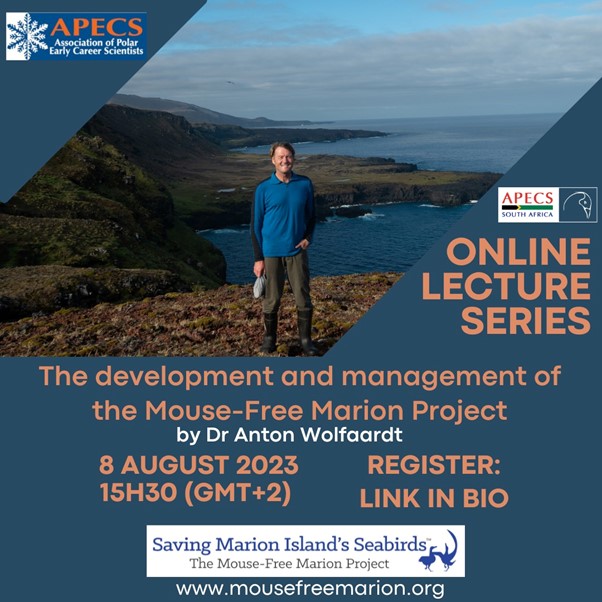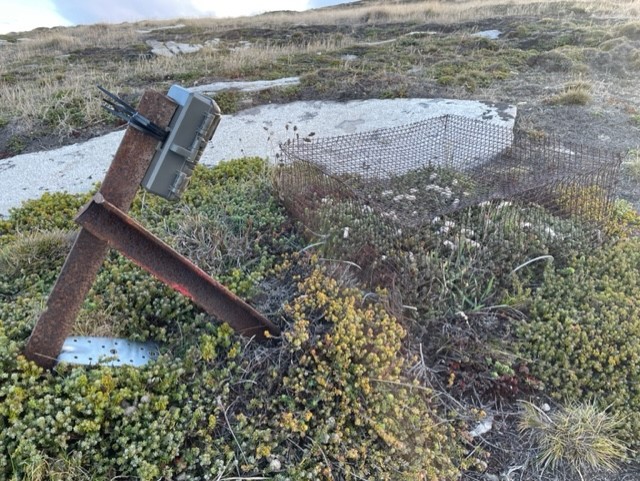UPDATE - NO RESPITE
Attacks by House Mice on Marion Island's beleagured Wandering Albatross chicks continue, with the latest victim in the Macaroni Bay study colony photographed by island researcher Michelle Risi today.
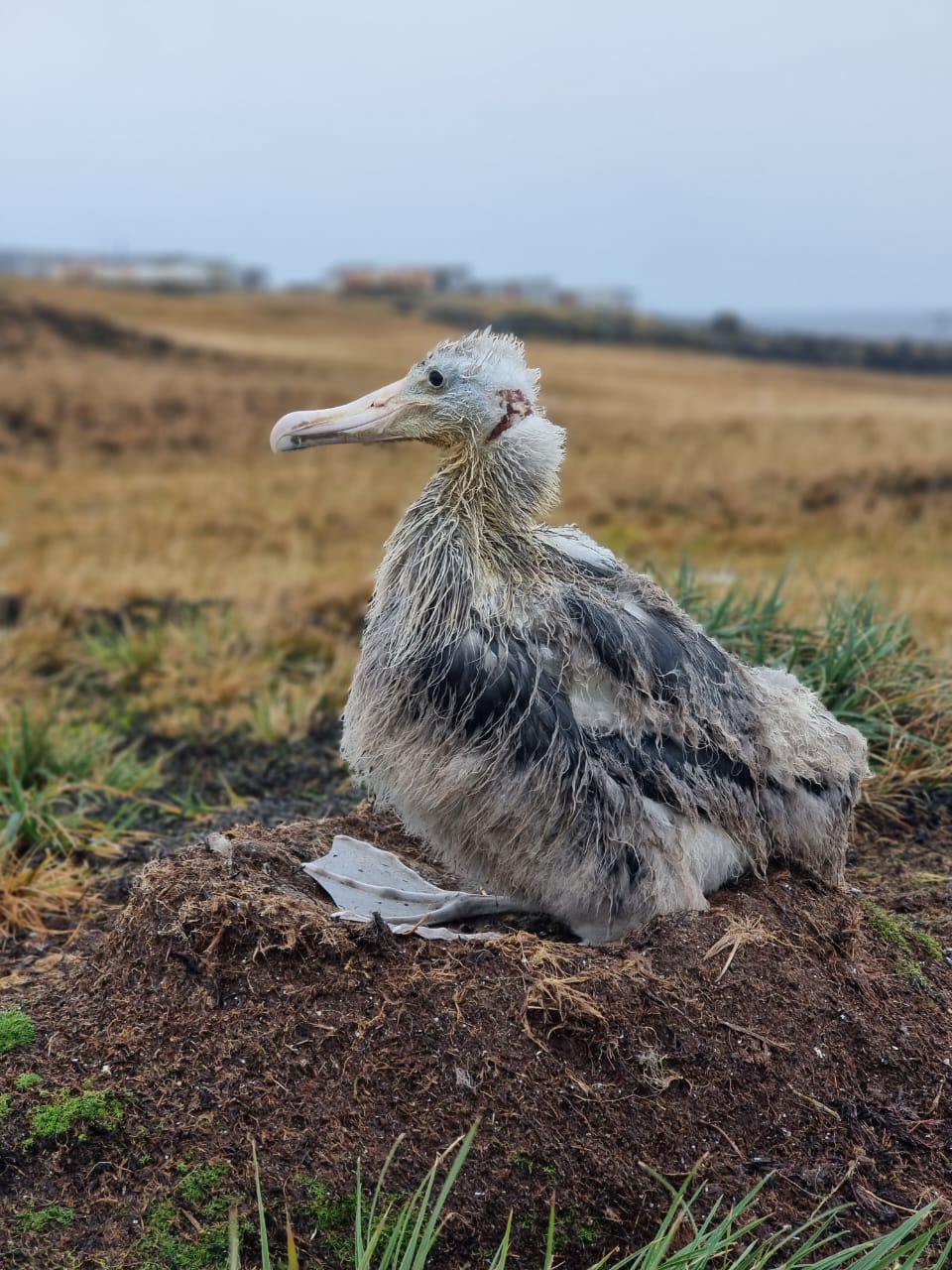 Scalped! This month's victim, photograph by Michelle Risi, 12 August 2023
Scalped! This month's victim, photograph by Michelle Risi, 12 August 2023
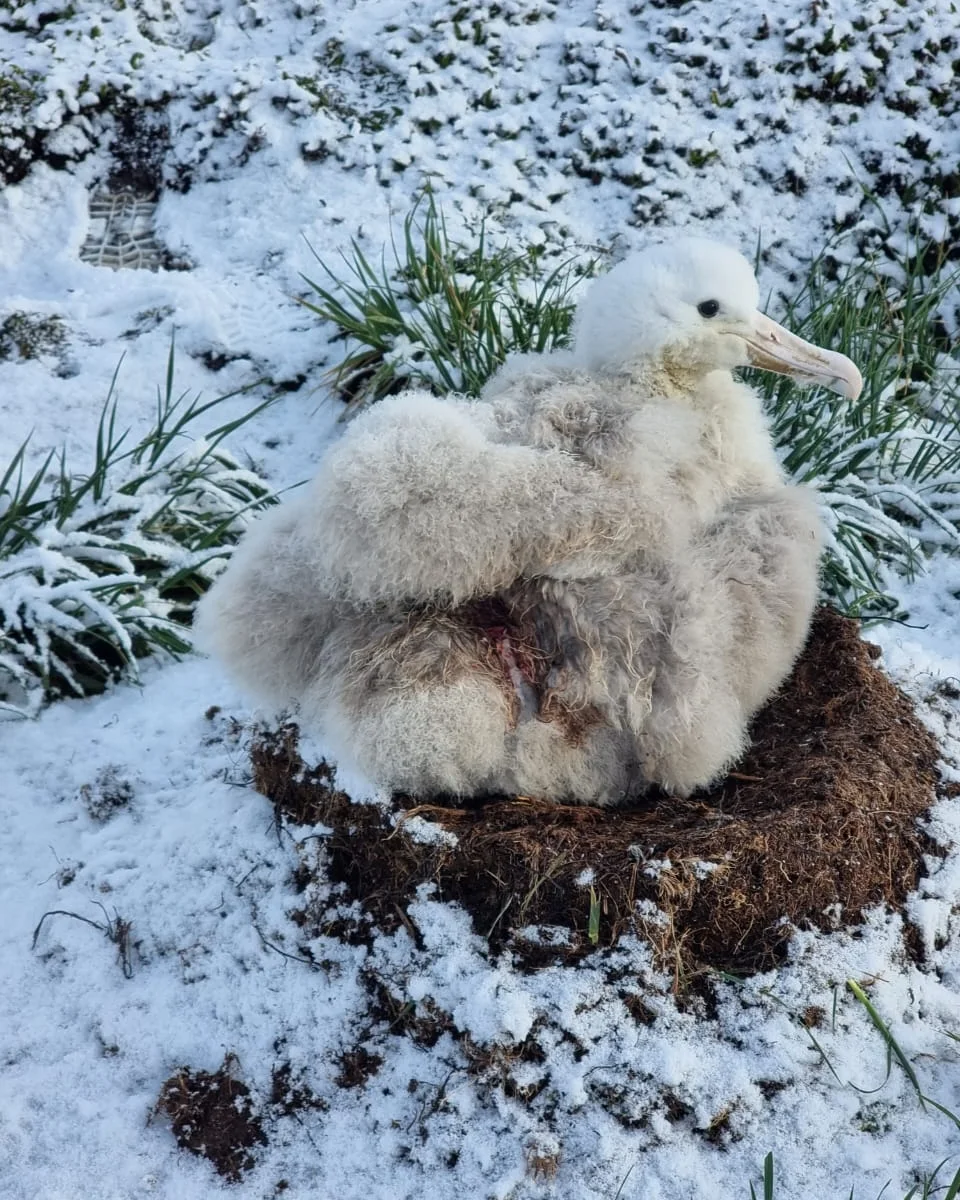
A Wandering Albatross chick on Marion Island shows clear signs of being attacked by mice; photograph by Michelle Risi
Marion Island’s seabirds are under attack. Predatory House Mice are ravaging their chicks, and even adults for some species. The Mouse-Free Marion (MFM) Project aims to rectify this situation and put the island back on the road to recovery. This will be done by a major campaign set to take place in winter 2025 when a fleet of helicopters will spread rodenticide bait over the whole island.
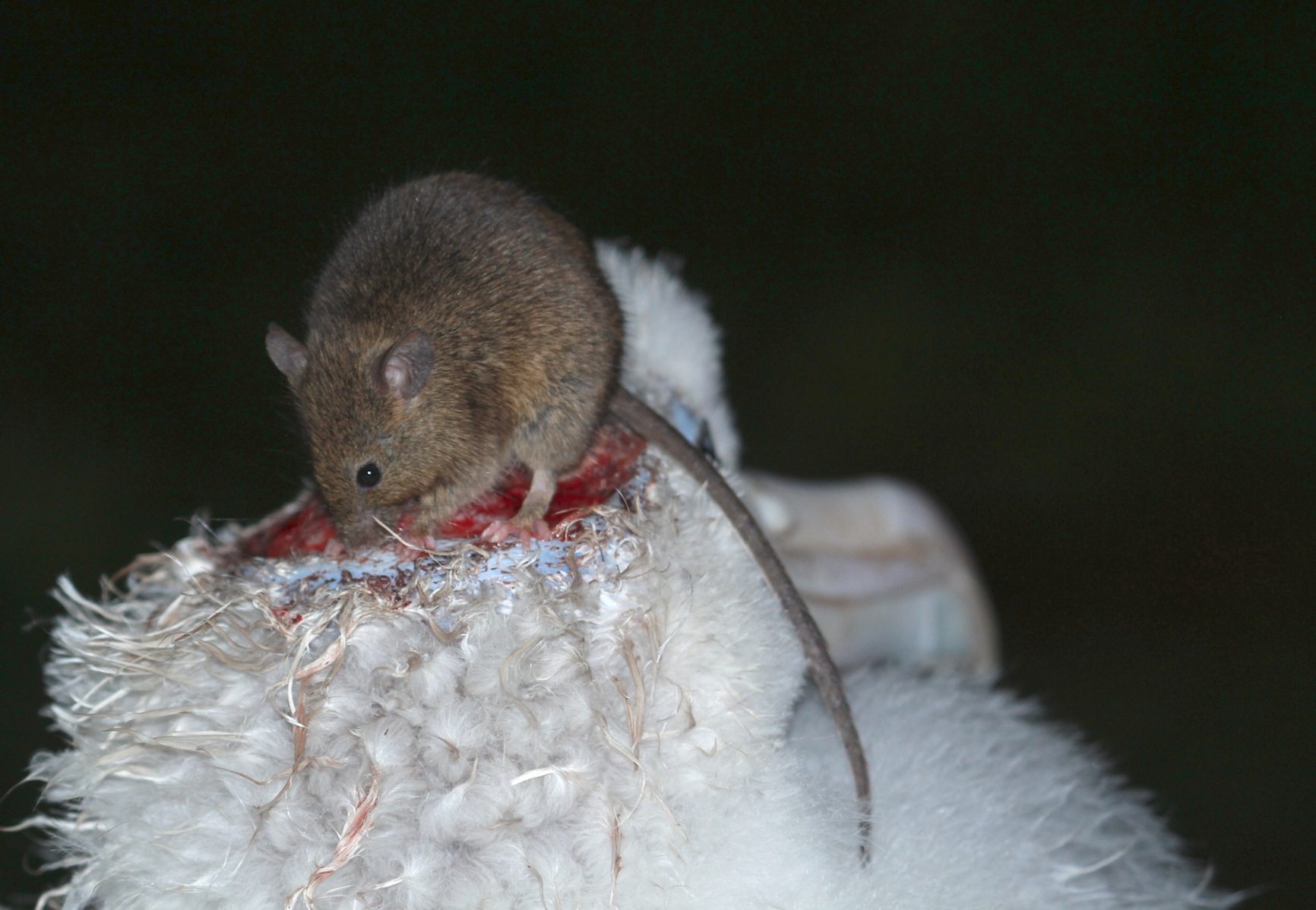
Scalped! A House Mouse feeds at night on the head of a defenceless Wandering Albatross chick on Marion Island in 2015; photograph by Stefan and Janine Schoombie
One of the most iconic seabirds that breeds on the island is the Wandering Albatross Diomedea exulans. Marion Island supports no less than a quarter of its world population, making it the most important breeding locality for this globally Vulnerable species. Despite its huge size, especially relative to a diminutive mouse, it is not safe from attacks that have led to severe wounding and eventual death of chicks, literally eaten alive while sitting on their nests. The first attacks on Wanderer chicks on Marion were recorded in 2003. Still photographs and video clips, some made at night, graphically illustrate the conservation problem (click here to access scientific publications on the mouse attacks).

Another view of the wounded chick, showing exposed flesh and bone on its rump; photograph by Michelle Risi
It is not unexpected then, but still worrying, to hear that attacks on Marion’s Wandering Albatross chicks are continuing, with the first observation this year being made on Midwinter’s Day (21 June) by island researchers Michelle Risi and Chris Jones from Nelson Mandela University’s Marine Apex Predator Research Unit. The post-guard chick had a wound on the rump leading to its downy flank becoming blood stained. The chick was in a long-term study colony (one of three on the island) centred above Macaroni Bay on the island’s east coast. Established in the early 1980s, all the nests in the study colonies are staked and mapped. Breeding adults are colour banded and followed through the long breeding season. This season 95 eggs were laid, but currently only 42 chicks remain. Chick mortalities due to mice have regularly reduced breeding success in this study colony, and it seems that the 2023 season will be no exception.
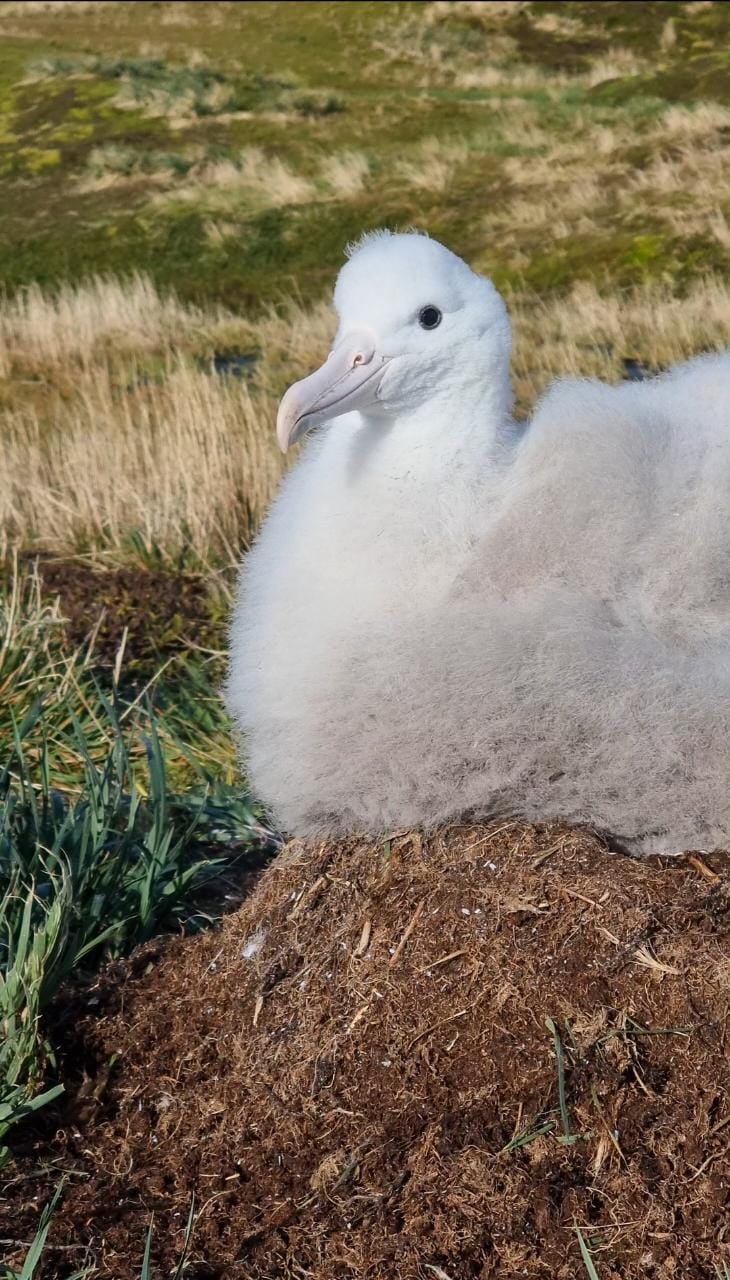
Before the attack: the chick on 6 June in good health; photograph by Michelle Risi
Photographed earlier on 6 June, the same chick then appeared to be in good health. A return visit on 29 June revealed the chick had succumbed and its corpse had likely been scavenged or it had been killed while in a moribund state by giant petrels Macronectes spp. and/or Subantarctic or Brown Skuas Catharacta antarctica. This disappointing outcome confirms the necessity and urgency of eradicating the island’s mice and encourages the MFM Project team to continue to work hard towards achieving this aim in two-year’s time.
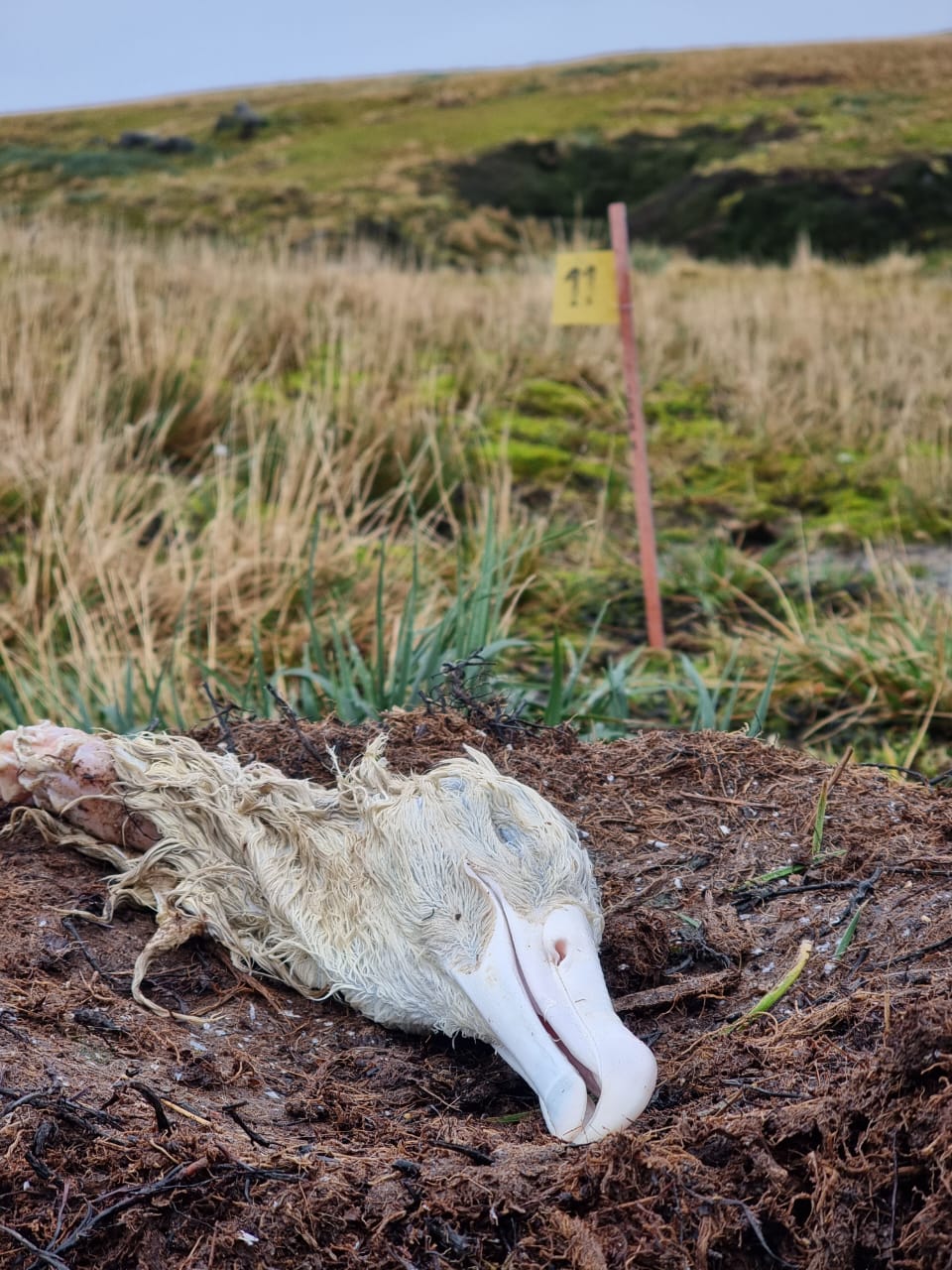
With stake M11 marking the nest site as if a grave, all that remained of the chick on 29 June; photograph by Michelle Risi
With thanks to Michelle Risi, Marine Apex Predator Research Unit, Nelson Mandela University, South Africa.
John Cooper, Emeritus Information Officer, Agreement on the Conservation of Albatrosses and Petrels, 11 July 2023, updated 12 August 2023
NOTE: First published on the Mouse-Free Marion Project website on 04 July 2023
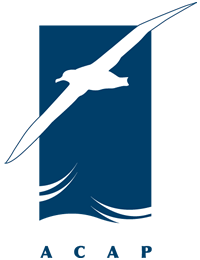
 English
English  Français
Français  Español
Español 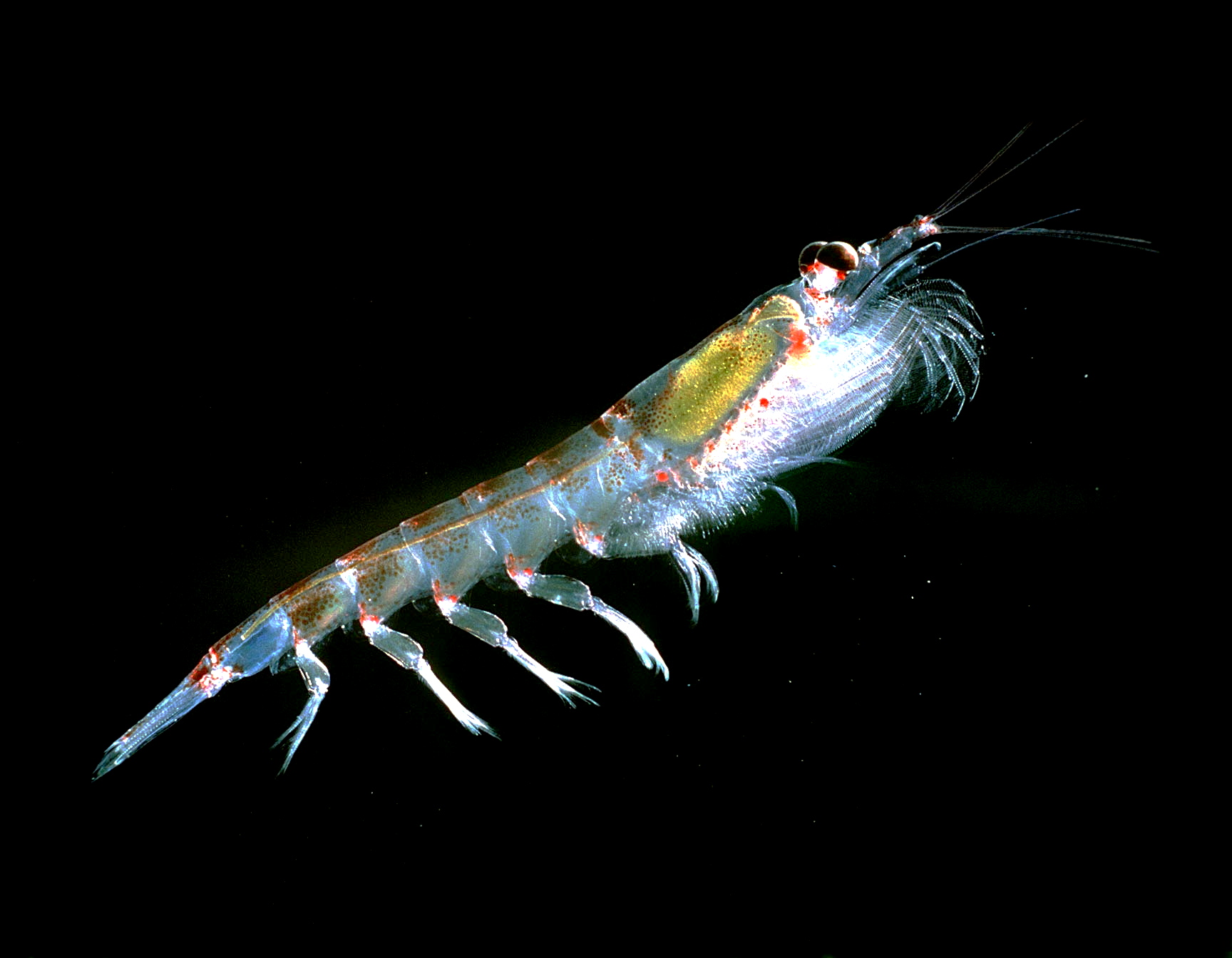 Antarctic Krill (
Antarctic Krill (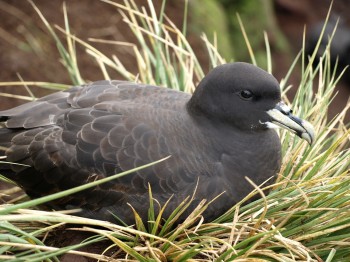 A White-chinned Petrel on a South Atlantic island, photograph by Andy Wood
A White-chinned Petrel on a South Atlantic island, photograph by Andy Wood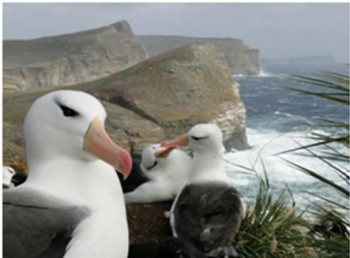
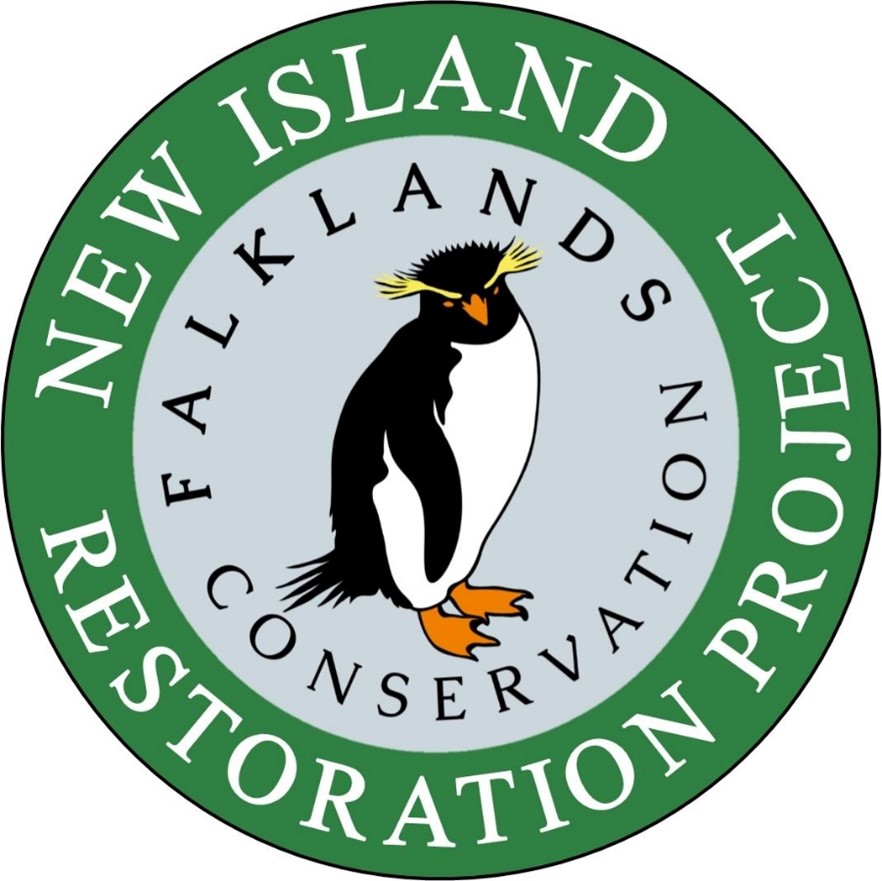
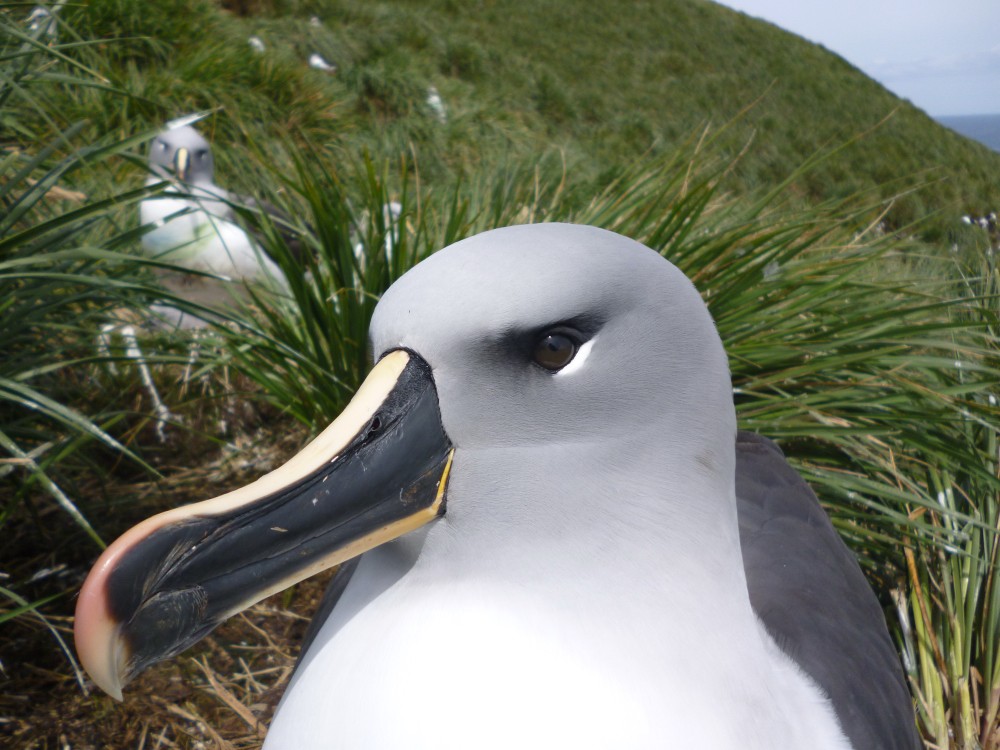 A Grey-headed Albatross of the South Atlantic; photo by Richard Phillips
A Grey-headed Albatross of the South Atlantic; photo by Richard Phillips

